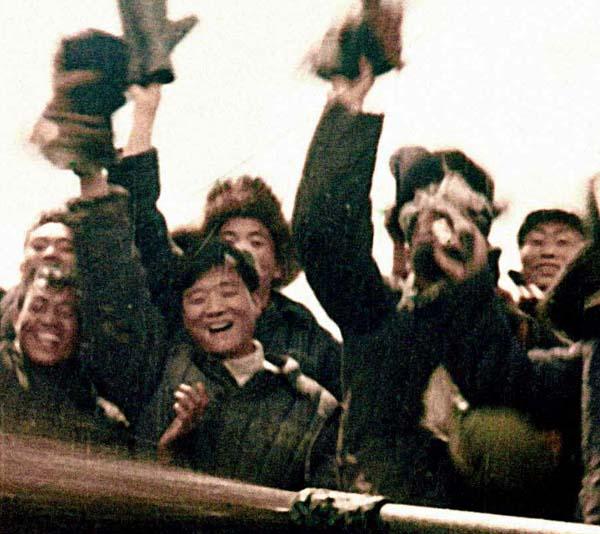1949 to 1959:Laying the Foundation for a New China
by China Pictorial
The founding of the Peoples Republic of China in 1949 marked the dawn of a new era for the Chinese nation. Over the course of the seven decades since, generation after generation of Chinese people have recorded the progress and changes in the country with their cameras. For the 70th anniversary of the founding of the Peoples Republic of China, lets pass through the light and shadows to take a look at landmark events during the past 70 years with photographs to refresh our memories of the nation.
Just after the Peoples Republic of China was founded, Chairman Mao Zedong lamented the countrys poor manufacturing industry. “What can we make now?” he asked. “We can produce tables, chairs, teapots and tea cups. We can also grow grains, grind wheat, and make paper. But we cannot produce a single automobile, plane, tank or truck.” His words reflected Chinas poverty and weakness at that time, and the urgent need to lay a solid foundation for economic development.
After a decade of recovery from 1949 to 1959, a stable situation gradually emerged in New China. During the First Five-Year Plan period (1953-1957), Chinese people built their first truck, first transistor, first large-size machine tool and first jet plane. China also creatively completed the socialist transformation of agriculture, handicrafts and capitalist industry and commerce. The establishment of a basic socialist system marked the most profound and significant social change in Chinese history and laid the foundation for future development and progress.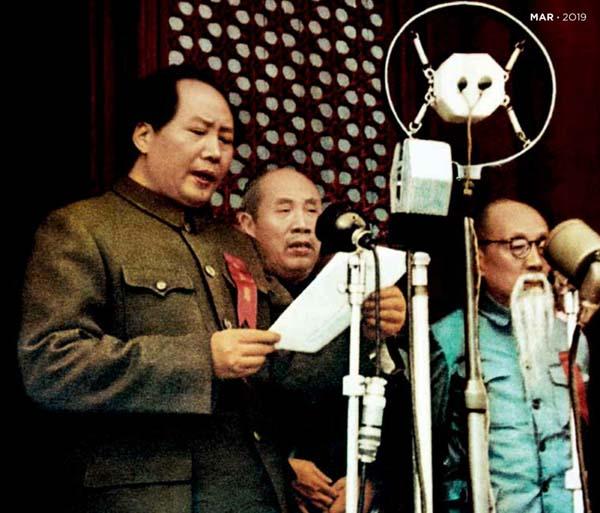
1949
On October 1, 1949, a ceremony celebrating the establishment of the central government of the Peoples Republic of China was held at Tiananmen Square in Beijing.
The founding of the Peoples Republic of China is the greatest milestone in Chinese history and one of the worlds greatest events of the 20th century. It ended a history of a few exploiters ruling the working-class people and imperialists enslaving all ethnic groups of China. Since then, Chinese people have become masters of their own country, and the Chinese nation has turned the page on a new chapter in history.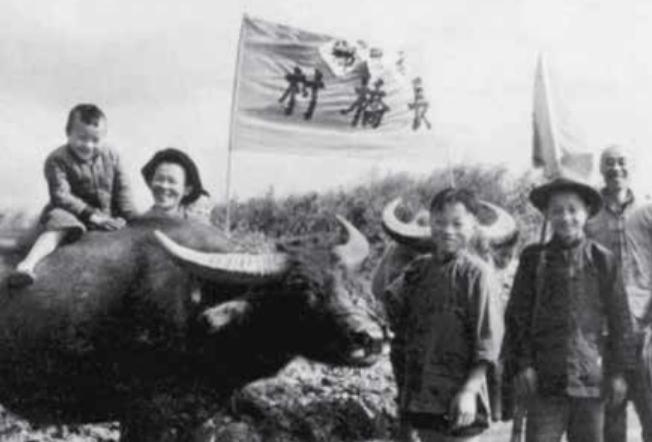
1950
After land reform, poverty-stricken farmer Gao Caiguan in Changqiao Village, Gaozhao Township of Jiaxing County, Zhejiang Province, was allocated 0.2 hectares of land as his own as well as a water buffalo to share with three other families. He put his boy on the back of the buffalo for the trip home.
Before 1949, China maintained a feudal land system that severely hindered development of the rural economy and Chinese society. On June 30, 1950, China promulgated Agrarian Reform Law of the Peoples Republic of China, announcing the abolition of feudal land ownership and the implementation of farmer land ownership. By the end of 1952, the land reform was completed in most parts of the country. About 300 million farmers, who previously had little or no land, were allocated nearly 47 million hectares of land and other productive resources.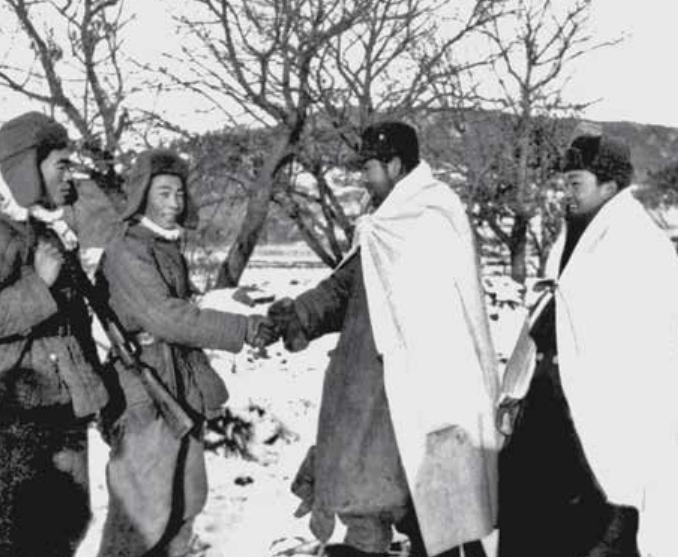
1951
In January 1951, troops of the Chinese Peoples Volunteer Army joined forces with guerrilla troops of the Democratic Peoples Republic of Korea(DPRK) active behind enemy lines, south of the Chongchon River in the DPRK.
On June 25, 1950, the Korean Civil War broke out. On June 27, the U.S. government launched a full-scale war against the DPRK. In spite of repeated warnings from the Chinese government, the U.S. military came quite close to Yalu and Tumen rivers on the border between the DPRK and China, and bombed Chinese cities and villages on the border, threatening Chinas national security. Under such circumstances, the Central Committee of the Communist Party of China (CPC) made the historic decision to resist U.S. aggression and aid the DPRK as they protected Chinese homes and defended the country. Chinas victory in the War to Resist U.S. Aggression and Aid Korea won the country a relatively stable and peaceful environment for further economic development and social reform.
1952
On July 1, 1952, some 300,000 locals celebrated the opening of the ChengduChongqing Railway at the Chengdu Railway Station. The Chengdu-Chongqing Railway was the first railway independently designed and built by China, with all construction materials domestically produced. A great breakthrough in the history of Chinese railways, the completion of the Chengdu-Chongqing Railway held great economic significance. The railway traverses the Sichuan Basin and promotes exchange of goods in southwestern China.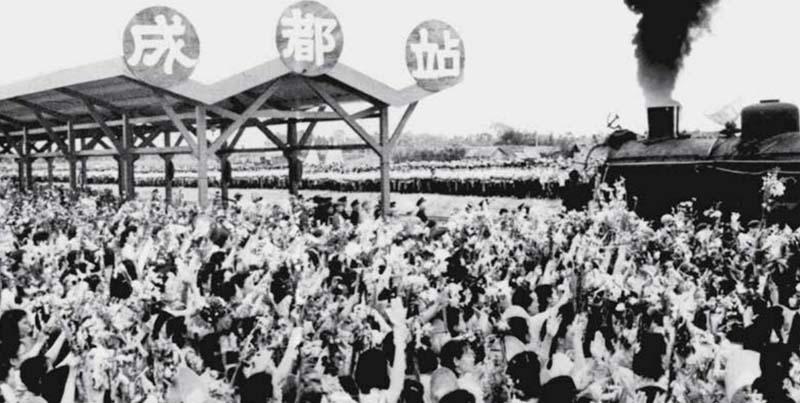
1953
In October 1953, a seamless pipe mill under Anshan Iron and Steel Group, constructed with the help of the former Soviet Union, began operation. The picture shows an expert from the former Soviet Union checking electrical installations with Chinese workers.
In 1953, China began to implement its First Five-Year Plan (1953-1957). During those five years, the former Soviet Union assisted China in constructing 156 key projects in fields like military industry, chemical engineering, mechanical engineering, energy and medicine. Relatively complete systems for Chinas basic industry and national defense industry were established, which laid a foundation for the countrys industrialization.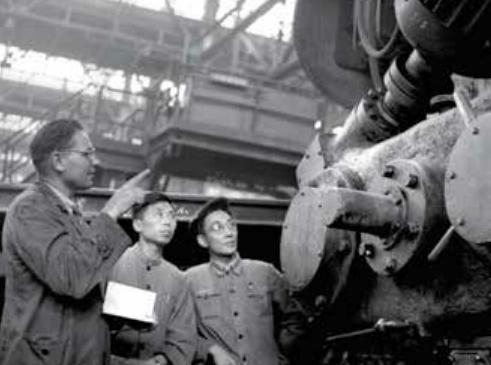
1954
On October 1, 1954, a parade to celebrate National Day carried a model of the Constitution of the Peoples Republic of China through Tiananmen Square in Beijing.
After the founding of the Peoples Republic of China, The Common Programme of the Chinese Peoples Political Consultative Conference, which was passed in September 1949, served as a provisional state constitution. However, with the gradual recovery of the national economy, the task of strengthening political construction was put on the agenda. On September 15, 1954, the first session of the First National Peoples Congress was held in Beijing, during which the first Constitution of the Peoples Republic of China was adopted.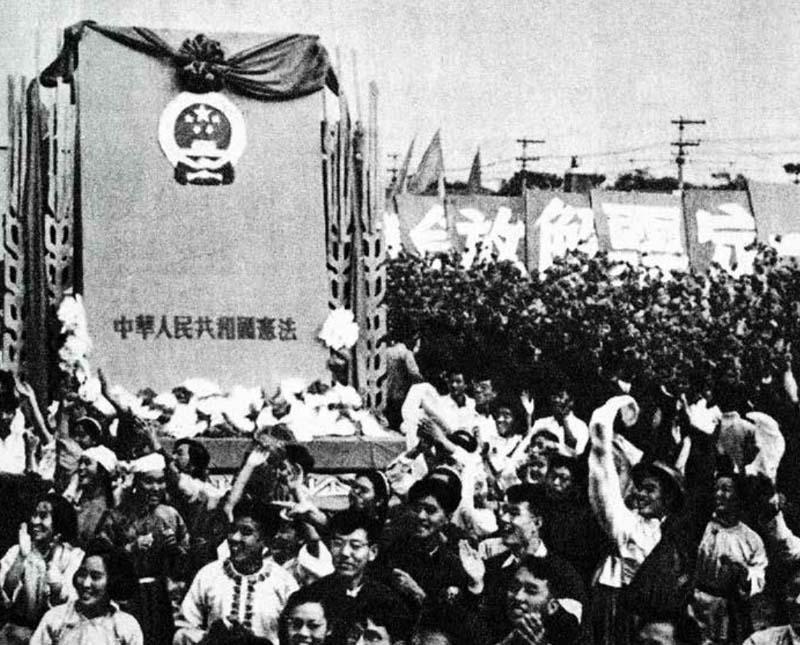
1955
The first Asian-African Conference, also known as Bandung Conference, was held in Indonesias Bandung from April 18 to 24, 1955. The picture shows then-Chinese Premier Zhou Enlai delivering a speech at the conference.
This was the first meeting held independently by Asian and African countries with an aim of seeking peace. Then-Chinese Premier Zhou Enlai led the Chinese delegation to the meeting and proposed the principle of seeking common ground while shelving differences which was highly influential in the success of the conference. The Bandung Conference enhanced other countries understandings of Chinas foreign policy and created conditions for the establishment of diplomatic relations between some Asian and African countries and New China. It also laid a good foundation for the further development of ties between China and Asian and African countries.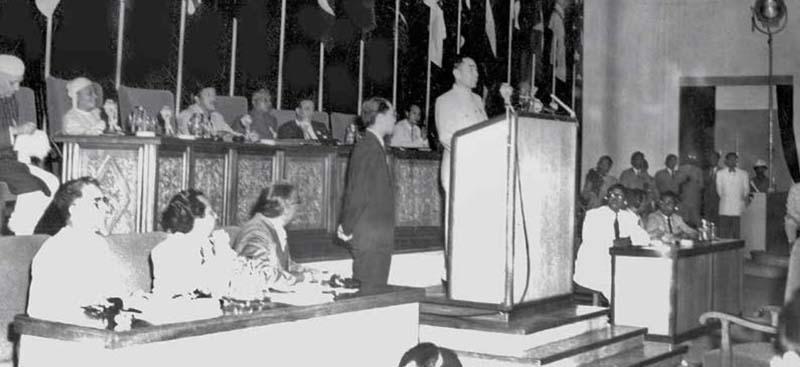
1956
In January 1956, Kunqu Opera Fifteen Strings of Coins made its debut in Hangzhou, Zhejiang Province. A sensational masterpiece that ushered in a renaissance of Kunqu Opera, it created a miracle by “saving a genre of traditional Chinese opera with one play.”
On May 2, 1956, China officially announced the policy of “letting a hundred flowers bloom”for literary and artistic work and “letting a hundred schools of thought contend” for scientific work. This campaign promoted the flourishing of the arts and the progress of science in the country.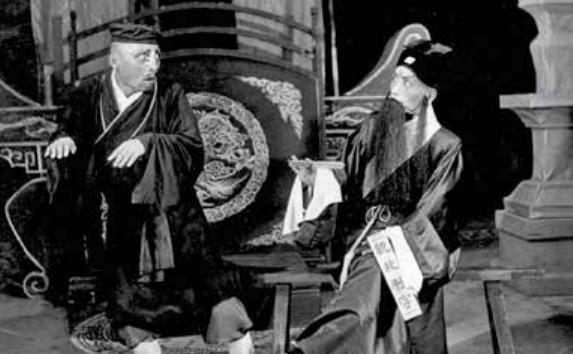
1957
Cars crossed the Wuhan Yangtze River Bridge on October 15, 1957, as the bridge officially opened to traffic. The Wuhan Yangtze River Bridge was one of Chinas 156 projects aided by the former Soviet Union. It started construction in September 1955 and officially opened to traffic on October 15, 1957. It was the first bridge to cross the Yangtze River in China and the first road-rail bridge built over the river after 1949. The bridge connected the Beijing-Hankou Railway with the Guangzhou-Wuchang Railway, which were previously separated by the Yangtze River. The link completed the Beijing-Guangzhou Railway system and played a major role in promoting Chinas economic development.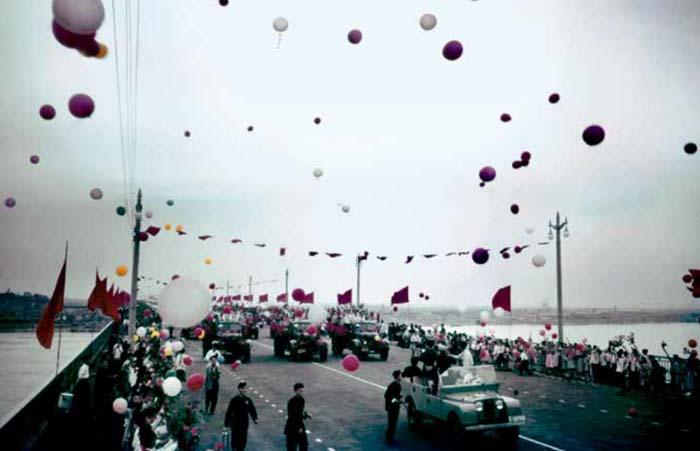
1958
On May 12, 1958, the trial production of Chinas first domestically produced sedan, the Dongfeng car (the predecessor of the brand Hongqi), succeeded. Serenaded by warm applause, the Dongfeng car cruised away from Changchun First Automobile Works.
The successful production of Chinese homemade sedans marked big progress for the countrys automobile industry. From then on, the countrys car manufacturing developed rapidly from scratch.
1959
On September 25, 1959, industrial crude oil reserves were found in Songliao Basin in northeastern China by the countrys oil exploration team. Discovered just before the 10th anniversary of the founding of the Peoples Republic of China, the oil field was named “Daqing,” meaning “grand celebration.”
The discovery of the Daqing Oil Field upended the long-standing belief that “China lacks oil.” Before 1949, China drilled only three small oil fields in Yumen of Gansu Province, Duzishan of todays Xinjiang Uygur Autonomous Region, and Yanchang of Shaanxi Province and two gas fields in Shengdengshan and Shiyougou in Sichuan Province. With annual crude oil output of only 100,000 tons, China imported most of the oil it used. In 1960, despite tremendous domestic difficulties, China harnessed abundant manpower and resources to tap the Daqing Oil Field and began developing its oil industry independently. By 1963, the country had basically achieved self-sufficiency in oil supply.